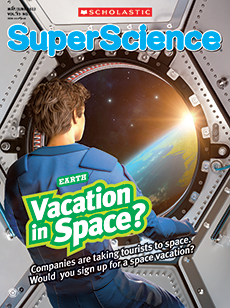NIKE
Nike used its sneaker line with LeBron James as the basis for its first accessible shoe. Matthew Walzer helped test the LeBron Soldier 8 FlyEase shoes, which have zippers instead of laces.
As a teen, Matthew Walzer of Parkland, Florida, looked forward to leaving home for college. But he worried he wouldn’t be able to because he couldn’t tie his shoes. Walzer has cerebral palsy, a disorder that affects his muscles. His right hand is not very flexible, so he can’t tie shoelaces without help.
In 2012, when Walzer was 16, he wrote to Nike. He asked the company to make sneakers that are more accessible, or easy to use. Nike had already been working on sneaker designs for people with disabilities. After receiving Walzer’s letter, the company invited him to test prototypes, or early models, of the shoes.
Since then, Nike has created a series of accessible sneakers. The newest version, the Nike Go FlyEase (above), can be put on and taken off hands-free!
Matthew Walzer is from Parkland, Florida. He looked forward to leaving home for college as a teen. But he worried he wouldn’t be able to go. That’s because he couldn’t tie his shoes. Walzer has cerebral palsy. This disorder affects his muscles. It’s hard for him to bend his right hand. So he can’t tie shoelaces without help.
Walzer wrote to Nike in 2012 when he was 16. He asked the company to make sneakers that were more accessible, or easy to use. Nike had already been working on prototypes of accessible sneakers. These early shoe models were designed for people with disabilities. The company invited Walzer to test them.
Nike has made a series of accessible sneakers since then. The newest version is called the Nike Go FlyEase (above). It can be put on and taken off hands-free!
